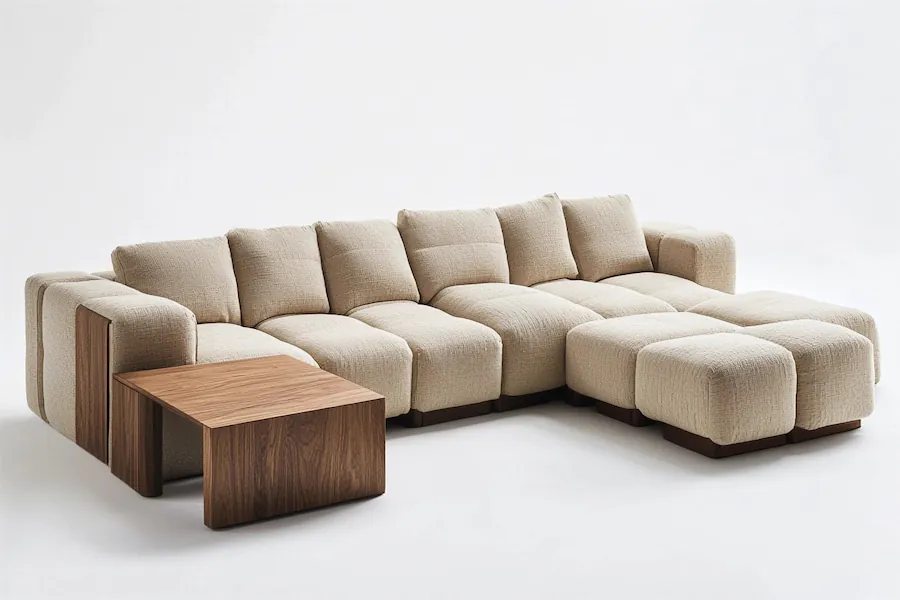A modular sofa, also known as a sectional sofa, consists of multiple independent pieces or modules that can be arranged in various configurations to suit different spaces and needs.
History and Origins of Modular Sofas
The concept of modular furniture gained prominence in the mid-20th century, particularly during the 1940s and 1950s, as a response to the evolving needs of post-war households. Open-plan living spaces became more common, necessitating versatile furniture solutions. Designer Harvey Probber is credited with pioneering modular seating in the 1940s, introducing sectional pieces that allowed for customizable arrangements. This innovation provided flexibility and adaptability, aligning with the modernist movement’s emphasis on functionality and simplicity.
Key Features of Modular Sofas
- Customizability: Modular sofas can be reconfigured to fit various room layouts and accommodate changing needs, offering personalized seating solutions.
- Versatility: With components like chaise lounges, corner units, and ottomans, modular sofas can serve multiple functions, from lounging to hosting guests.
- Space Optimization: Ideal for both large and small spaces, they can be adjusted to maximize seating without overwhelming the room.
- Design Variety: Available in a wide range of styles, fabrics, and colors, modular sofas can complement diverse interior aesthetics.
Applications of Modular Sofas
- Living Rooms: Serve as the centerpiece, providing ample seating and adapting to various activities, from family gatherings to solo relaxation.
- Office Spaces: Offer flexible seating arrangements in lounges or collaborative areas, enhancing functionality and comfort.
- Hospitality Settings: Utilized in hotels and lounges to create adaptable seating configurations that cater to different group sizes and events.
Considerations When Choosing a Modular Sofa
- Space and Layout: Assess the room dimensions and plan the desired configuration to ensure the sofa fits appropriately and complements the space.
- Component Selection: Choose modules that meet your functional needs, such as additional storage, sleeper options, or specific seating capacities.
- Aesthetic Compatibility: Select fabrics, colors, and designs that harmonize with your existing décor and personal style.
- Quality and Durability: Invest in well-constructed pieces with high-quality materials to ensure longevity and sustained comfort.
Conclusion
Modular sofas offer a blend of flexibility, functionality, and style, making them a popular choice for modern interiors. Their ability to adapt to various spaces and needs ensures they remain a practical and appealing option for diverse settings, from homes to commercial environments.
